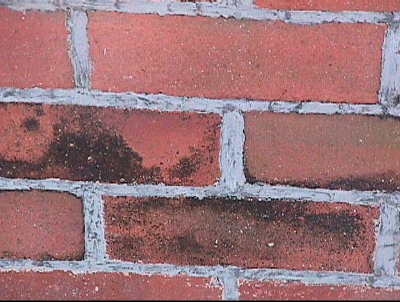Case 1
- Introduction
- Causes of Defects
- Good Practices
- Standards
- Maintenance and Diagnostics
- Remedial
- Similar Cases
- References


Introduction
Type of Building: Residential
Brick being a porous material collect dirt and retain moisture that allow the growth of plants and bacteria. In this case, algae was found to be growing on the brick surface.
Algae are classed as aeroterrestrial as they spread through windborne spores and colonise in a biofilm on a surface, and when the conditions are susceptible, they will grow organically. They are photosynthetic and must have sunlight to continue growing. Although mostly green due to the presence of chlorophyll, black, blue, red, orange and yellow algae (depending on the number of other pigments within it) are found on all types of façade materials, including rendering, glass, aluminium and granite.
Algae thrive best where there is sun, moisture and nutrients. Dirt that is blown off the road and retained on façades becomes a source of nutrients. As such, algae are commonly found mainly outdoors on external façades. Common species of algae that may be found on façades are Trentepohlia odorata, Chlorococcum and algae comprising Scytonema, Schizothrix and Anacystics.
For more information on staining issue on facade, please visit “Staining of Facades“.